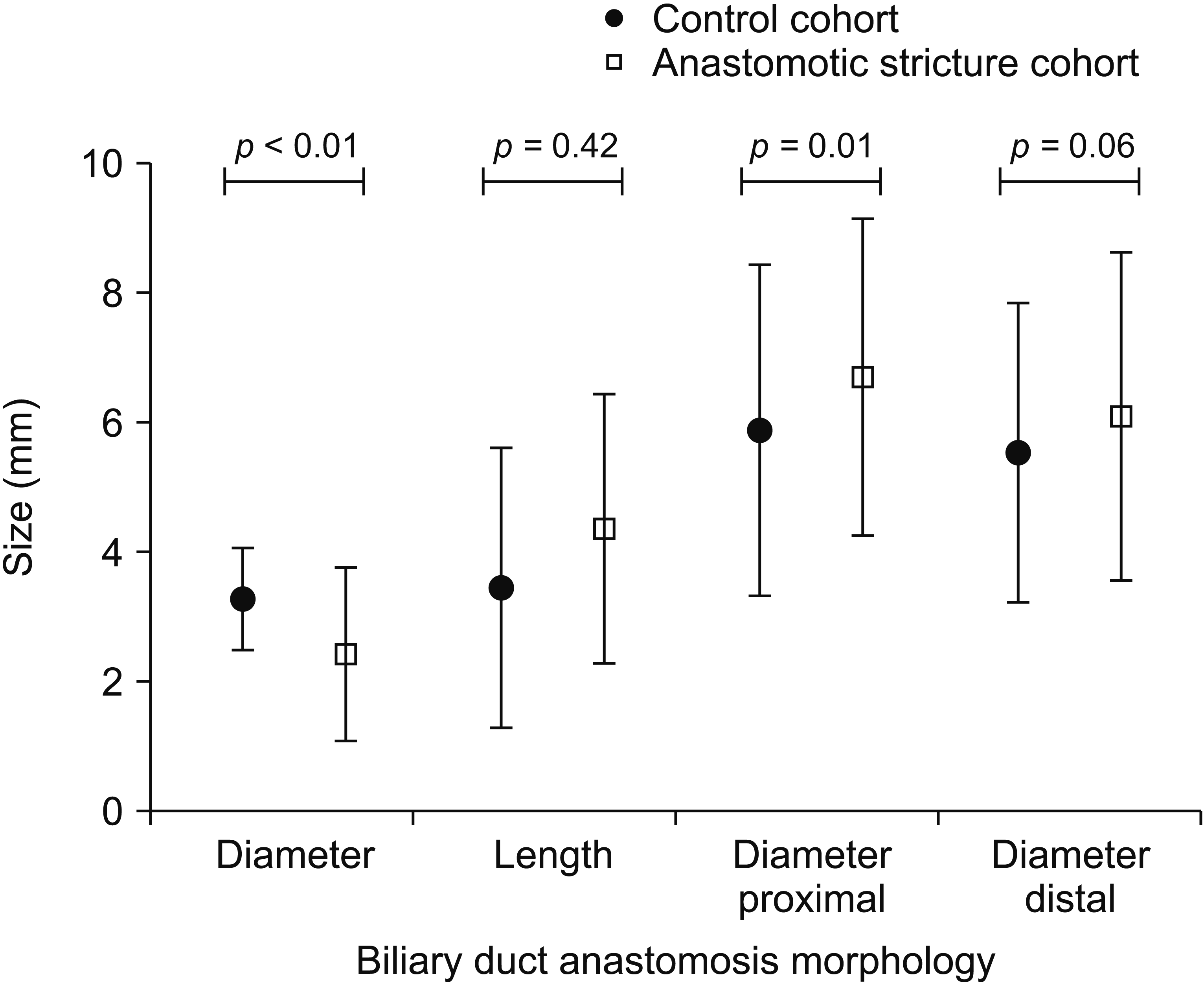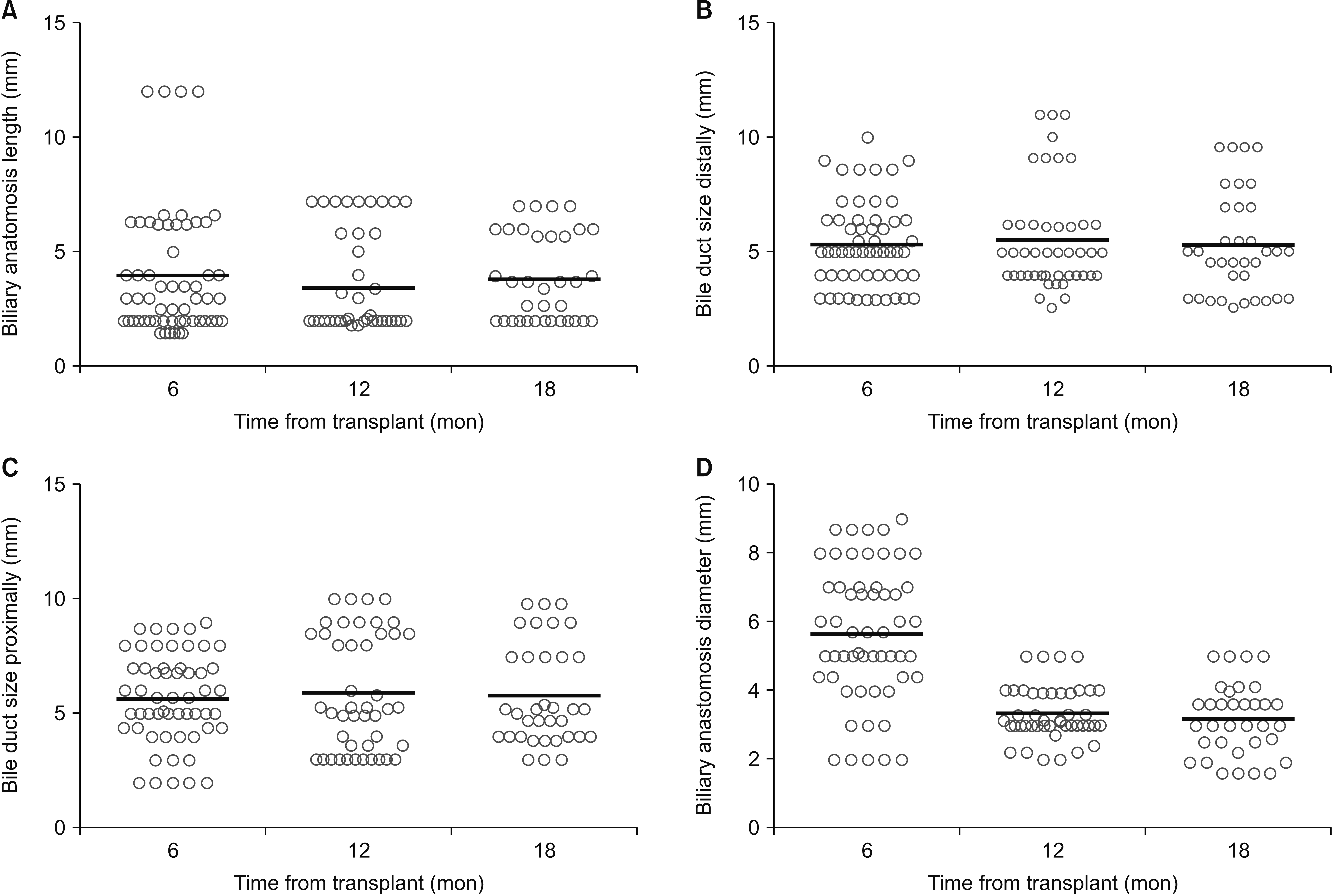1. Kohli DR, Shah TU, BouHaidar DS, Vachhani R, Siddiqui MS. 2018; Significant infections in liver transplant recipients undergoing endoscopic retrograde cholangiography are few and unaffected by prophylactic antibiotics. Dig Liver Dis. 50:1220–1224. DOI:
10.1016/j.dld.2018.05.014. PMID:
29907534.

2. Kohli DR, Harrison ME, Mujahed T, Fukami N, Faigel DO, Pannala R, et al. 2020; Outcomes of endoscopic therapy in donation after cardiac death liver transplant biliary strictures. HPB (Oxford). 22:979–986. DOI:
10.1016/j.hpb.2019.10.018. PMID:
31676256.

3. Kohli DR, Desai MV, Kennedy KF, Pandya P, Sharma P. 2021; Patients with post-transplant biliary strictures have significantly higher rates of liver transplant failure and rejection: a nationwide inpatient analysis. J Gastroenterol Hepatol. 36:2008–2014. DOI:
10.1111/jgh.15388. PMID:
33373488.

4. Sharma S, Gurakar A, Jabbour N. 2008; Biliary strictures following liver transplantation: past, present and preventive strategies. Liver Transpl. 14:759–769. DOI:
10.1002/lt.21509. PMID:
18508368.

5. Rerknimitr R, Sherman S, Fogel EL, Kalayci C, Lumeng L, Chalasani N, et al. 2002; Biliary tract complications after orthotopic liver transplantation with choledochocholedochostomy anastomosis: endoscopic findings and results of therapy. Gastrointest Endosc. 55:224–231. DOI:
10.1067/mge.2002.120813. PMID:
11818927.

6. Kohli DR, Vachhani R, Shah TU, BouHaidar DS, Siddiqui MS. 2017; Diagnostic accuracy of laboratory tests and diagnostic imaging in detecting biliary strictures after liver transplantation. Dig Dis Sci. 62:1327–1333. DOI:
10.1007/s10620-017-4515-0. PMID:
28265825.

7. Kochhar G, Parungao JM, Hanouneh IA, Parsi MA. 2013; Biliary complications following liver transplantation. World J Gastroenterol. 19:2841–2846. DOI:
10.3748/wjg.v19.i19.2841. PMID:
23704818. PMCID:
PMC3660810.

8. Kohli DR, Pannala R, Crowell MD, Fukami N, Faigel DO, Aqel BA, et al. 2021; Interobserver agreement for classifying post-liver transplant biliary strictures in donation after circulatory death donors. Dig Dis Sci. 66:231–237. DOI:
10.1007/s10620-020-06169-7. PMID:
32124198.

9. Simoes P, Kesar V, Ahmad J. 2015; Spectrum of biliary complications following live donor liver transplantation. World J Hepatol. 7:1856–1865. DOI:
10.4254/wjh.v7.i14.1856. PMID:
26207167. PMCID:
PMC4506943.

10. Tabibian JH, Girotra M, Yeh HC, Singh VK, Okolo PI III, Cameron AM, et al. 2015; Risk factors for early repeat ERCP in liver transplantation patients with anastomotic biliary stricture. Ann Hepatol. 14:340–347. DOI:
10.1016/S1665-2681(19)31273-6. PMID:
25864214.

11. Lucey MR, Terrault N, Ojo L, Hay JE, Neuberger J, Blumberg E, et al. 2013; Long-term management of the successful adult liver transplant: 2012 practice guideline by the American Association for the Study of Liver Diseases and the American Society of Transplantation. Liver Transpl. 19:3–26. DOI:
10.1002/lt.23566. PMID:
23281277.

12. Nair S, Lingala S, Satapathy SK, Eason JD, Vanatta JM. 2014; Clinical algorithm to guide the need for endoscopic retrograde cholangiopancreatography to evaluate early postliver transplant cholestasis. Exp Clin Transplant. 12:543–547. PMID:
25489806.
13. Rao HB, Prakash A, Sudhindran S, Venu RP. 2018; Biliary strictures complicating living donor liver transplantation: problems, novel insights and solutions. World J Gastroenterol. 24:2061–2072. DOI:
10.3748/wjg.v24.i19.2061. PMID:
29785075. PMCID:
PMC5960812.

14. Woo YS, Lee KH, Lee KT, Lee JK, Kim JM, Kwon CHD, et al. 2017; Postoperative changes of liver enzymes can distinguish between biliary stricture and graft rejection after living donor liver transplantation: a longitudinal study. Medicine (Baltimore). 96:e6892. DOI:
10.1097/MD.0000000000006892. PMID:
28984750. PMCID:
PMC5737986.
15. Ben-Ari Z, Weiss-Schmilovitz H, Sulkes J, Brown M, Bar-Nathan N, Shaharabani E, et al. 2004; Serum cholestasis markers as predictors of early outcome after liver transplantation. Clin Transplant. 18:130–136. DOI:
10.1046/j.1399-0012.2003.00135.x. PMID:
15016125.

16. Bhati C, Idowu MO, Sanyal AJ, Rivera M, Driscoll C, Stravitz RT, et al. 2017; Long-term outcomes in patients undergoing liver transplantation for nonalcoholic steatohepatitis-related cirrhosis. Transplantation. 101:1867–1874. DOI:
10.1097/TP.0000000000001709. PMID:
28296807.

17. Kohli DR, Harrison ME, Adike AO, El Kurdi B, Fukami N, Faigel DO, et al. 2019; Predictors of biliary strictures after liver transplantation among recipients of dcd (donation after cardiac death) grafts. Dig Dis Sci. 64:2024–2030. DOI:
10.1007/s10620-018-5438-0. PMID:
30604376.

18. Wroblewski F. 1958; The clinical significance of alterations in transaminase activities of serum and other body fluids. Adv Clin Chem. 1:313–351. DOI:
10.1016/S0065-2423(08)60362-5. PMID:
13571034.
19. Hall P, Cash J. 2012; What is the real function of the liver 'function' tests? Ulster Med J. 81:30–36. PMID:
23536736. PMCID:
PMC3609680.
20. Kamimoto Y, Horiuchi S, Tanase S, Morino Y. 1985; Plasma clearance of intravenously injected aspartate aminotransferase isozymes: evidence for preferential uptake by sinusoidal liver cells. Hepatology. 5:367–375. DOI:
10.1002/hep.1840050305. PMID:
3997068.

21. Turlin B, Slapak GI, Hayllar KM, Heaton N, Williams R, Portmann B. 1995; Centrilobular necrosis after orthotopic liver transplantation: a longitudinal clinicopathologic study in 71 patients. Liver Transpl Surg. 1:285–289. DOI:
10.1002/lt.500010503. PMID:
9346584.

22. Girometti R, Como G, Bazzocchi M, Zuiani C. 2014; Post-operative imaging in liver transplantation: state-of-the-art and future perspectives. World J Gastroenterol. 20:6180–6200. DOI:
10.3748/wjg.v20.i20.6180. PMID:
24876739. PMCID:
PMC4033456.

23. Thethy S, Thomson BNJ, Pleass H, Wigmore SJ, Madhavan K, Akyol M, et al. 2004; Management of biliary tract complications after orthotopic liver transplantation. Clin Transplant. 18:647–653. DOI:
10.1111/j.1399-0012.2004.00254.x. PMID:
15516238.

24. Le Berre C, Sandborn WJ, Aridhi S, Devignes MD, Fournier L, Smaïl-Tabbone M, et al. 2020; Application of artificial intelligence to gastroenterology and hepatology. Gastroenterology. 158:76–94.e2. DOI:
10.1053/j.gastro.2019.08.058. PMID:
31593701.






 PDF
PDF Citation
Citation Print
Print




 XML Download
XML Download